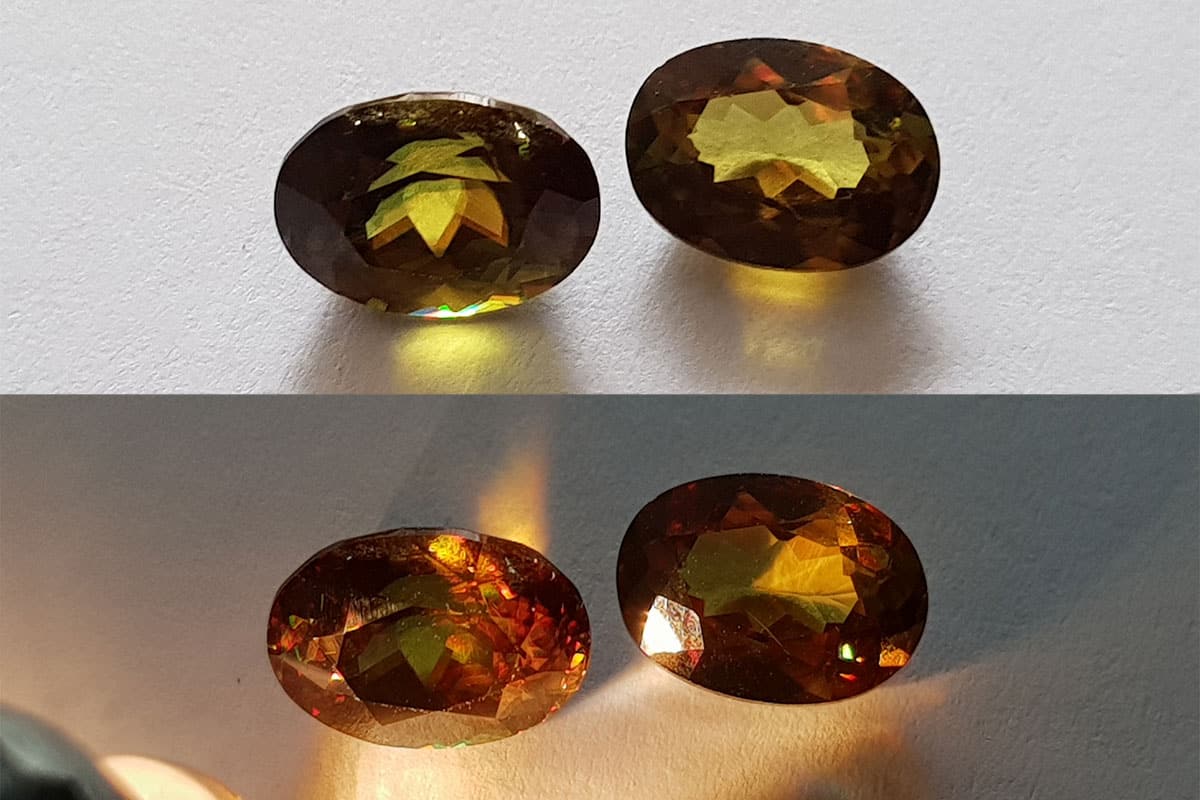What are gemstones optical phenomena?

Gemstones optical phenomena
Gemstones optical phenomena results from the way light interacts with the crystalline structure of a gemstone. This interaction or interference can be in the form of light scattering, reflection, refraction, diffraction, absorption or transmission.
Adularesence
Adularescence is a blue sheen phenomenon reflecting on the domed cabochon surface of Moonstone. The phenomenon of shimmer comes from the interaction of light with layer of little “albite” crystals in moonstones. The thickness of layer of these tiny crystals determine the quality of blue shimmer. Thinner the layer, better the blue flash. This usually appears as a billowy light effect. Moonstone is orthoclase feldspars, another name is “selenite”. Romans called it Astrion.
Asterism
Gem cutters often choose to cut cabochon shapes, when stones are low quality. In such gems and stones when the light falls on the cabochon surface and makes star‐like rays, the phenomenon is called asterism. There are 4 ray and 6 ray stars observed normally. This happens when the orientation of the needle like inclusions or silk within the crystal is on more than one axis.
Chatoyancy
From the french name “Chat” mean cat. Chatoyancy refers to a phenomenon akin to opening and shutting of cat’s eye. We can observe in chrysoberyl cat’s eye gem with great clarity. Cat eye gems have a single sharp band, sometimes two or three bands, running across the domed cabochon surface. Cat’s eye gemstones in cabochon shape are cut highlight chatoyancy. The straight needles of the crystal structure of the stone are perpendicular to the phenomena. So when light falls on it, the sharp band can be seen. In the best cases, the chatoyant chrysoberyl cats eye visually separates the surface into two halves. We can see a milk and honey effect when the stone move under light.
Iridescence
Iridescence is also known as goniochromism, a phenomenon where the surface of a material displays several colors as the angle of viewing changes. It can be easily visible in neck of a pigeon, soap bubbles, wings of a butterfly, mother of pearl etc. The irregularity of surface and large interstitial spaces allow light to pass and reflect back from multiple surfaces (diffraction) causing the multi-color visual effect. Combined with interference, the result is dramatic. Natural pearls display iridescence that is very different from its body color. Tahitian pearls display great iridescence.
Play of colour
The wonderful gem called opal displays a beautiful color. The fire opals from Lightening Ridge, Australia (showing shifting patches of luminous spectral colors against black) are famous for this phenomenon. While this play of color is a type of iridescence, almost all gemstone dealers call it wrongly “fire”. Fire is a gemological term, It’s the dispersion of the light reflect in gemstones. It’s typically visible in a diamond. It is a simple dispersion of light. In case of opals it isn’t dispersion and hence, it’s wrond to use the word “fire”.
Color change
The best example of color change is alexandrite. These gems and stones appear very different in incandescent light compared to natural day light. This is largely due to the gems chemical composition as well as strong selective absorption. The alexandrite appears green in daylight and also appears red in incandescent light. Sapphire, also tourmaline, alexandrite and other stones can aslo show a color change.
Labradorescence
Labradorescence is a kind of iridescence, but is highly directional because of crystal twinning. We can find it in labradorite gemstone.
